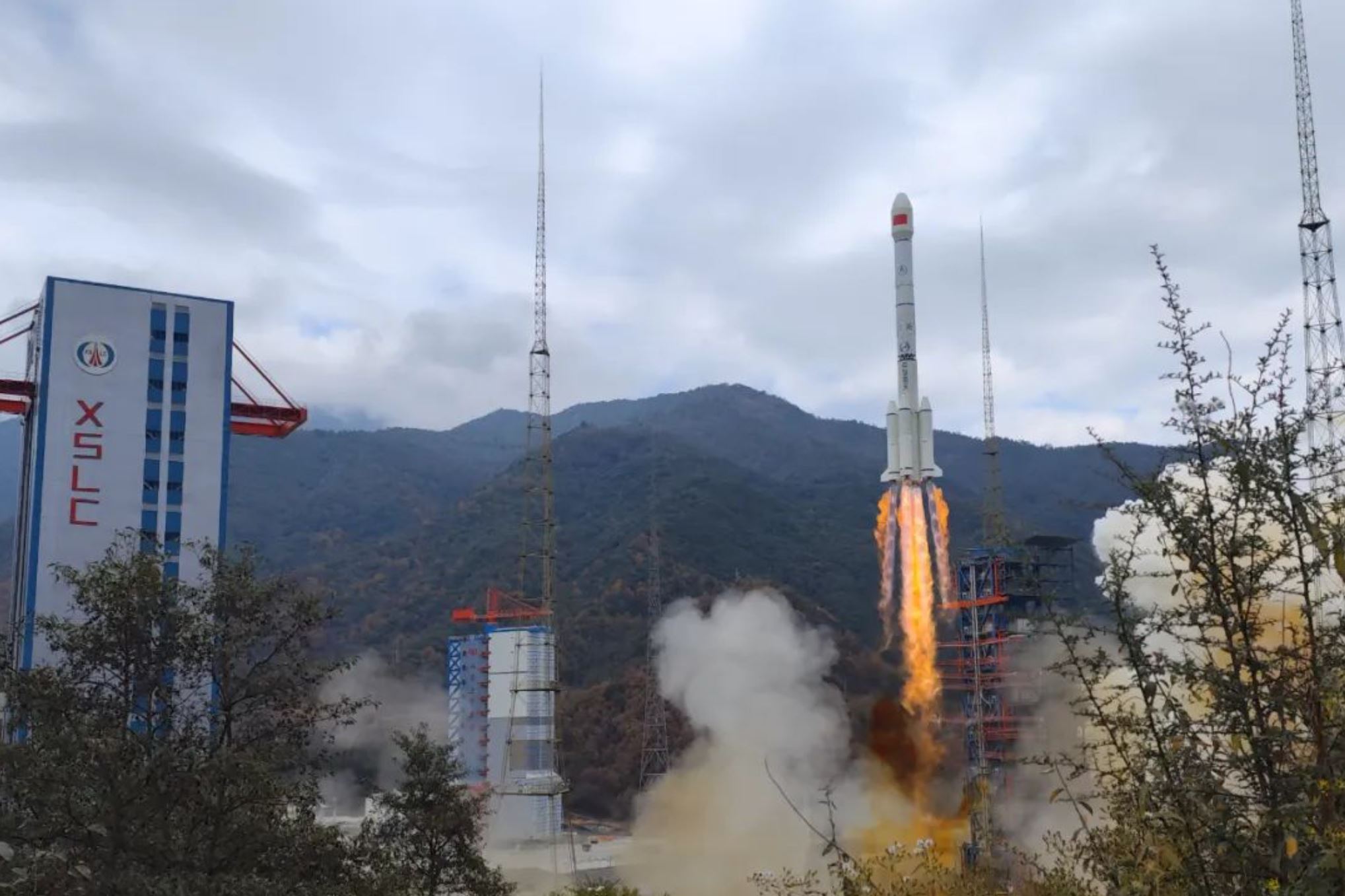HELSINKI — China has conducted its 64th and final launch of the year, sending the Shiyan-10 (02) into orbit from Xichang spaceport.
A Long March 3B rocket lifted off from Xichang Satellite Launch Center in southwest China at 11:43 p.m. Eastern Dec. 28, carrying Shiyan-10 (02). The China Aerospace Science and Technology Corp. (CASC), confirmed launch success shortly after.
The purpose of the satellites was not revealed. Shiyan series satellites are often classified and understood to be used to test new technologies and payloads for Chinese space systems. State media Xinhua stated the new satellite will be “used for in-orbit verification of new space technologies, such as space environment monitoring.”
The Shiyan-10 (02) is a classified spacecraft which could be sent to join the earlier Shiyan-10 satellite in a highly-elliptical Molniya orbit to provide greater operational coverage of the northern hemisphere.
The first Shiyan-10 satellite launch from Xichang Satellite Launch Center Sept. 27, 2021. It was initially reported by CASC to be stranded in transfer orbit.
It was later picked up in a highly elliptical 1,880 by 38,881 kilometer altitude orbit with an inclination of 63.6 degrees, having effected a large alteration to its earlier orbital inclination, putting it into a Molniya orbit.
Such orbits—the highly elliptical nature of which means spacecraft spend most of their roughly 12-hour orbital period visible over the northern hemisphere—are used for communications, remote sensing or missile early warning systems, climate and weather monitoring, early warning systems and other purposes such as signals intelligence.
The new satellite could be sent into a similar orbit to the first satellite, but with a different right ascension of the ascending node to provide greater coverage over the northern hemisphere.
When the spacecraft is near its apogee over the northern hemisphere, it will appear to move slowly over the Earth below. This makes the orbit useful for providing communications between two sites in the northern hemisphere or monitoring for early warning. Constant services can be provided by placing three satellites in similar Molniya orbits, each providing links for several hours each day.
China operates its China Remote Sensing Satellite North Polar Ground Station, which is located in Kiruna, northern Sweden, which would be visible to the Shiyan-10 satellites for long periods near its apogee.
The mission followed the Dec. 27 launch of the Gaofen-11 (04) Earth observation satellite from Taiyuan Satellite Launch Center in north China using a Long March 4B rocket. Earlier reports indicate these satellites belong to a classified segment of China’s Gaofen series, with the capability to return optical imagery at a resolution of around 10 centimeters.
The Shiyan-10 (02) launch was China’s 64th of 2022. This meant the country has far surpassed its previous national record for a calendar year of 55, set in 2021. 53 of the 2022 launches were Long March rocket launches conducted by CASC, all of which were successful. These included six missions to the now-completed Tiangong space station, a 22-satellite mission using the Long March 8 and a first launch of the Long March 6A, a first liquid core-solid booster combo for CASC and China.
Expace, China Rocket and CAS Space—spinoffs from CASIC, CASC and the Chinese Academy of Sciences respectively—and private outfits Galactic Energy, iSpace and Landspace accounted for the other launches. The launches of iSpace’s Hyperbola-1 solid rocket and Landspace’s milestone Zhuque-2 methalox launcher represented the two failures.
